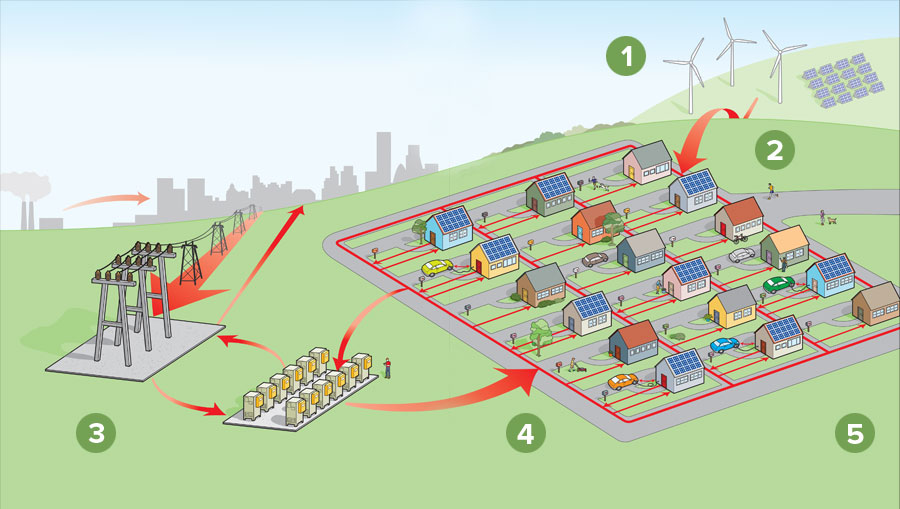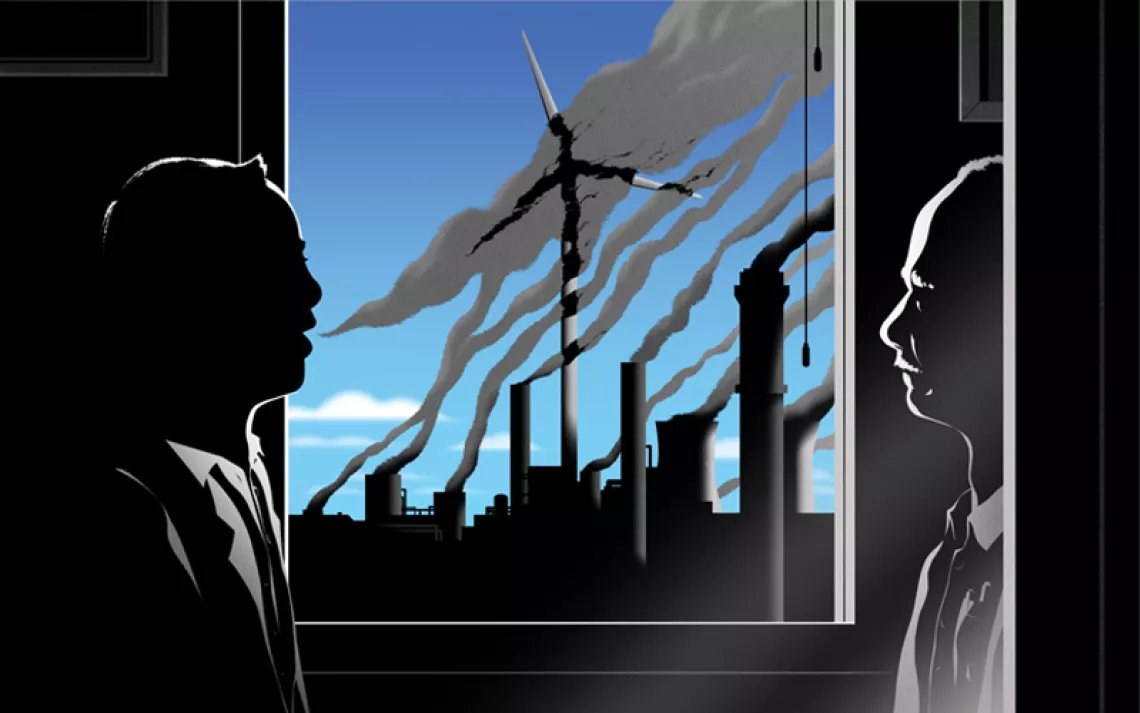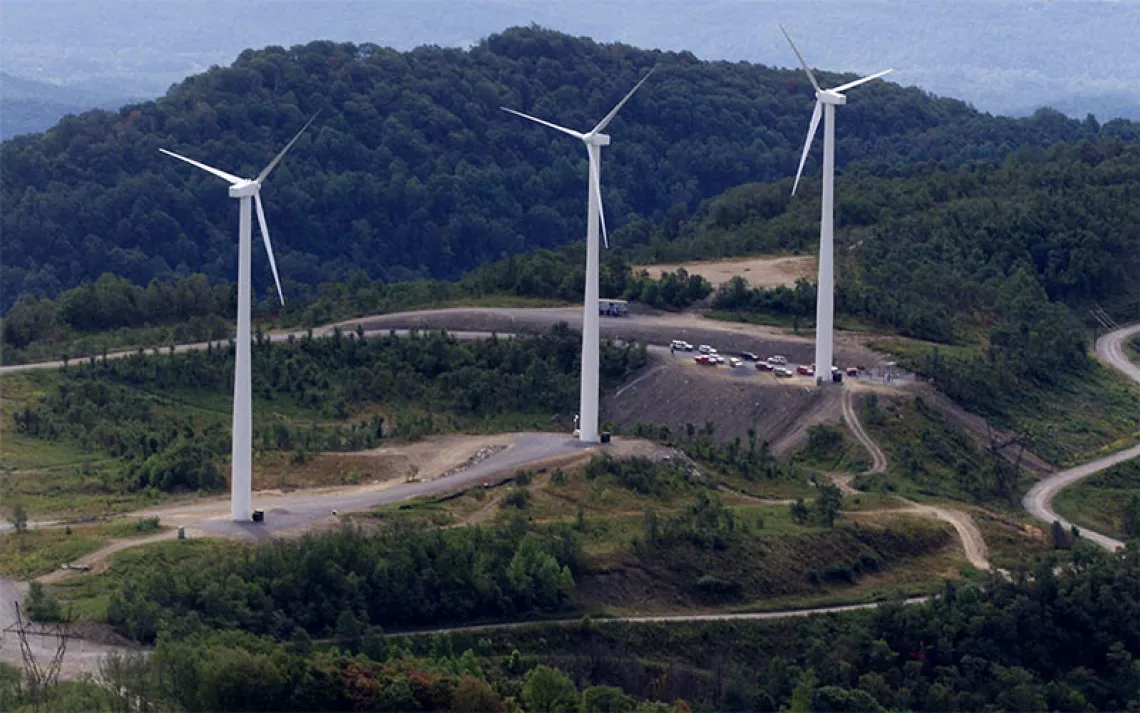The Power of Microgrids
One obstacle to using cleaner, more local, renewable power is the power grid itself. Our antiquated system of regional grids is, for the most part, hardwired to route electricity from big power plants. In fact, utilities have warned that the grid could go haywire if local "decentralized" power exceeds 15 percent of supply.
Microgrids offer an intriguing path to semi-independence. A microgrid empowers a geographic area to use its own electricity when it's available and to rely on the existing utility grid when it's not. If the big grid flickers, the microgrid can hum along in "island mode" and keep critical functions running. As we enter an era of superstorms, that could mean fewer blackouts. And if those local energy sources are renewable, it means a smaller carbon footprint.
A solar-powered microgrid operates on Alcatraz Island in San Francisco Bay, and some factories create mini-power plants from their own steam. Other institutions, including the University of California at San Diego and about 40 U.S. military bases, are building their own grids. Here's how a community microgrid might work one day in your neighborhood.

Illustration by Aleks Sennwald
- Microgrids would make feasible large community energy projects such as biomass plants, banks of fuel cells, and neighborhood arrays of solar panels or wind turbines.
- When a blackout occurs, rooftop solar panels often go dead too, since most people have no way to store electricity on-site. A microgrid might enable the panels to keep working. But the really interesting question is where that power would go. Would you use it yourself or dedicate your trickle of power to the police station?
- Conventional electricity is delivered through a tangled network of substations (above) and feeders. Microgrids could use smart inverters (right)--newer, more adaptive tools for converting between DC and AC power--and sophisticated software to allow a community to deliver and retrieve power without disturbing the grid's delicate voltage balance.
- Microgrids could make the power system more efficient (by preserving the up to 15 percent of electricity that can be lost on long-distance transmission lines and local feeders) and less polluting (by reducing reliance on carbon dioxide-spewing power plants).
- For the local microgrid to provide serious backup during a power outage, there would have to be storage. That could take the form of clean fuel or large, expensive batteries--or even those batteries-on-wheels otherwise known as electric cars. This so-called vehicle-to-grid solution could serve as a giant, flexible, and networked storehouse of energy for the neighborhood.
Mr. Microgrid

When Hurricane Sandy knocked the lights out across the East Coast last October, the microgrid catapulted from the listservs of tinkerers and greenies into the national discussion. City planners began to ask how local power could help millions of people weather tomorrow's bigger, more frequent storms.
Pareto Energy, a Washington, D.C., company, is trying to retool the hardened and centralized infrastructure of the 20th-century power grid into doing something it was never designed to do. "Could we be up when the grid is up, and be up when the grid is down, and transition seamlessly between those two states?" asks Alan McDonnell, Pareto's chief engineer.
It's not as easy as it might seem. The grid gets jittery and unpredictable when power from too many small, independent sources is shoved onto it. McDonnell's solution is a smart inverter that avoids grid endangerment by sending the power not upstream to the grid but downstream to users.
Generators need to synchronize with the grid extremely quickly, sometimes in less than a tenth of a second. Most engines can't respond that fast. McDonnell has figured out how to make a generator's speed vary, allowing just enough "slop" for it to sync with the grid and possibly avoid the flicker between when the grid goes down and the generator turns on.
McDonnell, 45, is an electrical engineer who has built motors for diamond-crushing machines in the frozen north of Canada and has improved the power delivery of drilling rigs, wind turbines, and hybrid buses. He modified a giant sugar centrifuge in Paraguay so it creates electricity while separating white sugar from molasses. "I've learned a lot about big rotating machines," McDonnell says.
If Pareto and other innovators can bring megawatts of local power onto the grid, newscasters might stop uttering "huge storm" and "massive power outage" in the same sentence. Neighborhoods could ride out the tempest, and their residents would still be able to charge their cellphones. One day people might start looking at neighborhood solar arrays as YIMBYs instead of NIMBYs.
Illustrations: Brown Bird Design
 The Magazine of The Sierra Club
The Magazine of The Sierra Club







